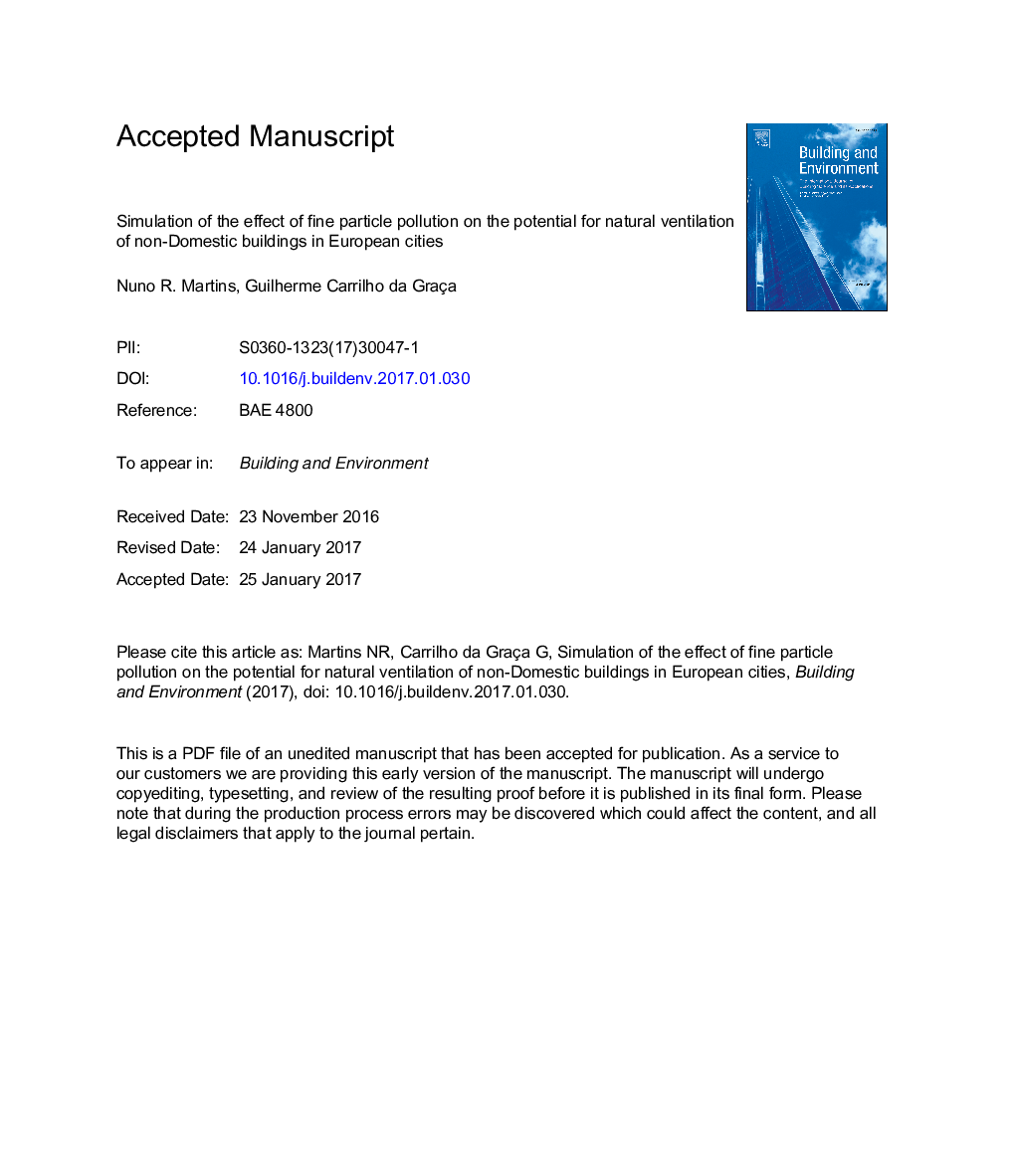| Article ID | Journal | Published Year | Pages | File Type |
|---|---|---|---|---|
| 4911547 | Building and Environment | 2017 | 33 Pages |
Abstract
This paper presents a numerical analysis of the effect of fine particle pollution on the natural ventilation potential of office buildings in nine European cities. Several years of measured weather and PM2.5 concentration data were used to perform statistical and dynamic thermal and airflow simulation analysis. The statistical analysis confirmed that most PM2.5 is locally generated. Higher PM2.5 levels occur in the morning, when wind speeds are low and commuter traffic is high. Unfortunately, in most of the analyzed cities, most hours when daytime weekday outdoor temperatures are mild have elevated PM2.5 levels (up to 95% of the hours). The simulation analysis shows that a hybrid NV system can reduce the electricity consumption of a well-designed office building by up to 60%, in comparison to an office using only mechanical HVAC equipped with a high-efficiency particle filter. Unfortunately, in this hybrid approach, elevated outdoor PM2.5 levels penetrate into the working environment and increase occupant cumulative exposure by 1.9-4.2 times (compared to the standard HVAC system). Limiting the use of NV to moments of low outdoor PM2.5 concentrations limits the exposure increase to 1.3 to 2.4 times but reduces the maximum energy savings to 40%. The last part of this study analyses the tradeoff between energy savings and increased exposure, revealing that in Antwerp, Lisbon and Paris most NV-related energy savings occur in moments of low outdoor PM2.5 levels, thereby limiting the increased exposure effects that occur when unfiltered NV air enters into the working environment.
Related Topics
Physical Sciences and Engineering
Energy
Renewable Energy, Sustainability and the Environment
Authors
Nuno R. Martins, Guilherme Carrilho da Graça,
